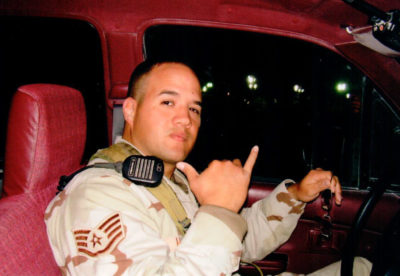Amicus Brief Filed to Hold HPD Accountable for Killing of Sheldon Haleck
Three civil rights organizations — the American Civil Liberties Union of Hawai‘i (ACLU of Hawai‘i), the African American Lawyers Association of Hawaii (“AALA”), and the Hawaii Disability Rights Center (“HDRC”) — filed an amicus brief in the Ninth Circuit Court of Appeals on Friday, July 17, 2020, supporting a Hawai‘i family’s efforts to hold Honolulu Police Department (HPD) officers accountable for the 2015 killing of Sheldon Haleck.
Mr. Haleck was a Samoan U.S. Air National Guard veteran who died in March 2015, after three HPD officers tased him three times and pepper-sprayed him twelve to fourteen times in the span of about five minutes. The HPD officers decided to use such tremendous force even though Mr. Haleck was unarmed, non-violent, and not committing a crime, and even though the officers suspected that Mr. Haleck was “mentally deranged” at the time.
In October 2015, Mr. Haleck’s family filed a civil rights lawsuit against the City and County of Honolulu and the three HPD officers involved alleging, among other things, that the officers used excessive force in violation of the Fourth Amendment to the United States Constitution. After a two-week trial in mid-2019, the jury returned a verdict in favor of the HPD officers.
The “friend of the court” brief filed on July 17 supports the appeal brief filed by Mr. Haleck’s family, which asks for a new trial based on several errors made by the federal district court judge. The amicus brief focuses on three arguments.
First, the court improperly excluded relevant expert testimony and jury instructions about how signs of Mr. Haleck’s mental disability (PTSD) and mental state impacted the amount of force that the HPD officers were permitted to use.
Second, and by contrast, the court allowed expert testimony that Mr. Haleck died because of “excited delirium,” an unreliable, unscientific, and racist diagnosis pushed by Axon Enterprise, Inc.(formerly Taser International, and the inventor of the Taser) and police departments to justify police killings, primarily against people of color and people with disabilities.
Third, the Americans with Disabilities Act (ADA) applies to arrests, and courts must therefore consider the ADA in determining what response is reasonable or required from police officers during encounters with people with disabilities or people experiencing mental health crisis.
[courtesy of YouTube]
The case is Gulstan Silva, Jr., et al v. City and County of Honolulu, et al., Ninth Circuit Case No. 20-15381.
Daphne Barbee-Wooten, AALA President said: “The African American Lawyers Association of Hawaii is concerned and condemns the disproportionate excessive force used by police against ‘minorities,’ Brown and Black people. This case — where a Samoan man was killed by the police — is an example of excessive force and we join with the ACLU and Hawaii Disability Rights Center to expose and put an end to this unnecessary killing.”
Louis Erteschik, HDRC Executive Director said: “This case demonstrates the catastrophic effects that result from the failure of police to deescalate encounters with people who have a mental illness. Given that about 20-25% of people suffer from mental illness, police need to do better in deciding whether and how they use force during encounters.”
Jim Davy, Attorney for Amici Curiae said: “As people across the country continue to protest the injuries and deaths of unarmed people at the hands of law enforcement, cases like Mr. Haleck’s stand in starker relief than ever. We cannot allow ‘excited delirium’ and other excuses to thwart accountability and justice.”
Wookie Kim, ACLU of Hawaiʻi Staff Attorney and Attorney for Amici Curiae said: “Although Mr. Haleck’s mental disability and mental health crisis was a critical part of this case, the jury did not have the opportunity to consider the full context in deciding whether the officers used excessive force. People with disabilities disproportionately face state violence, so when their families seek accountability after their deaths, juries must hear about safer practices that could have de-escalated–and avoided–the fatal encounter in reaching a verdict. This jury did not have that chance, and that is unjust.”




